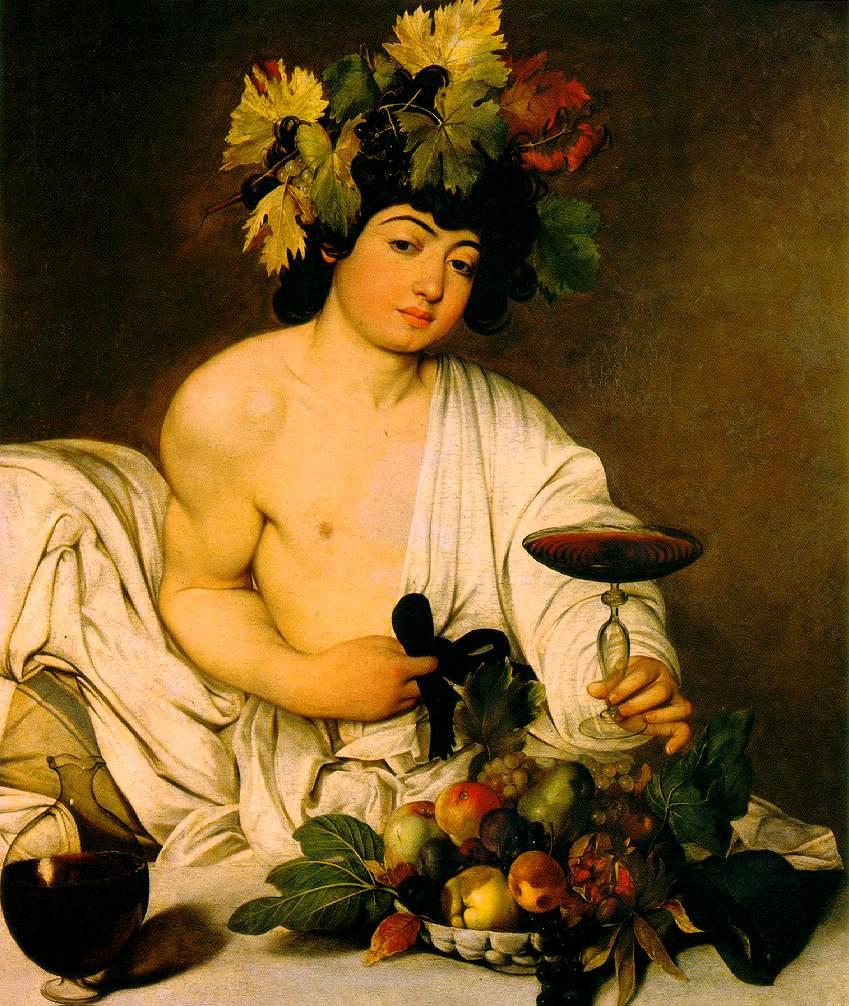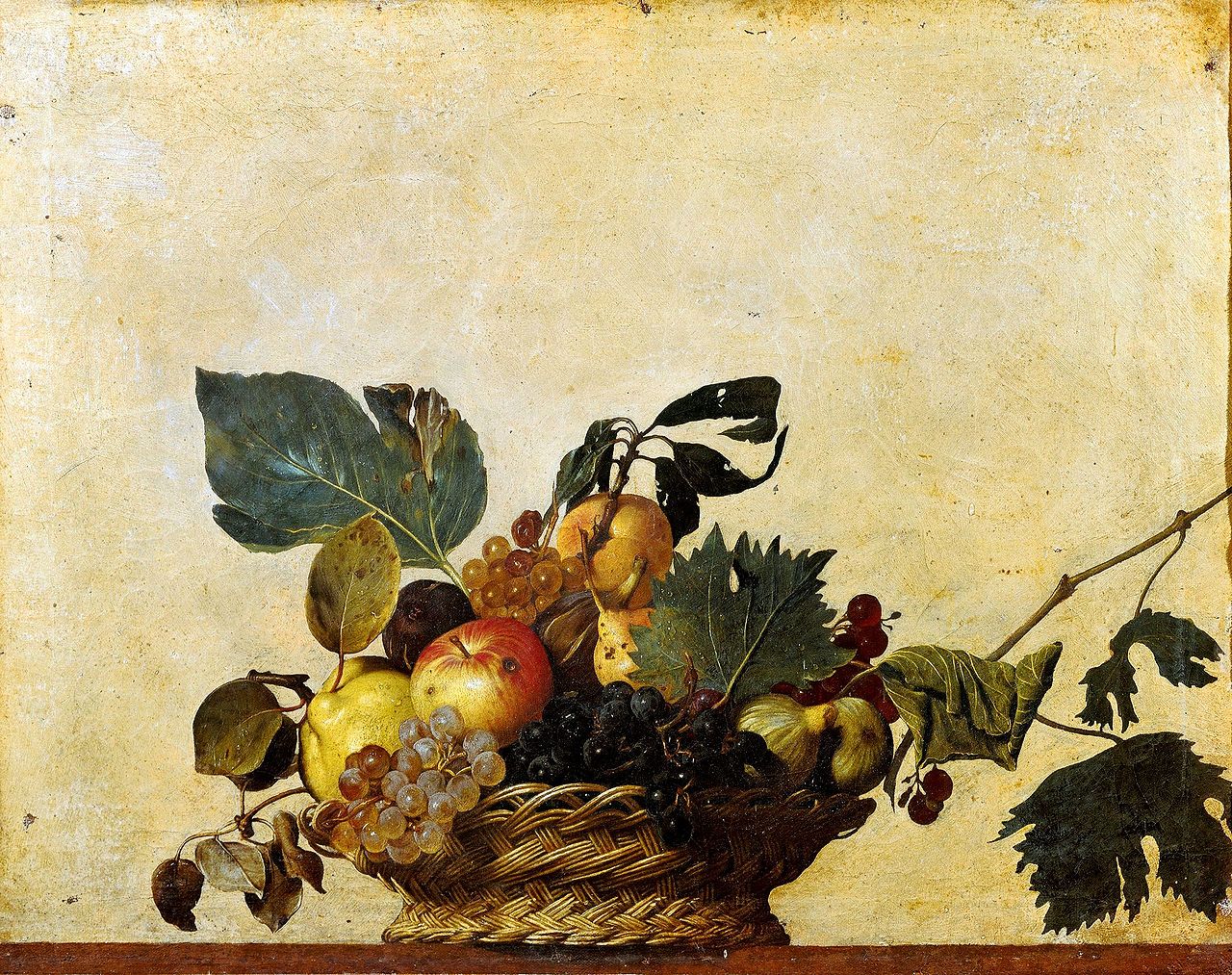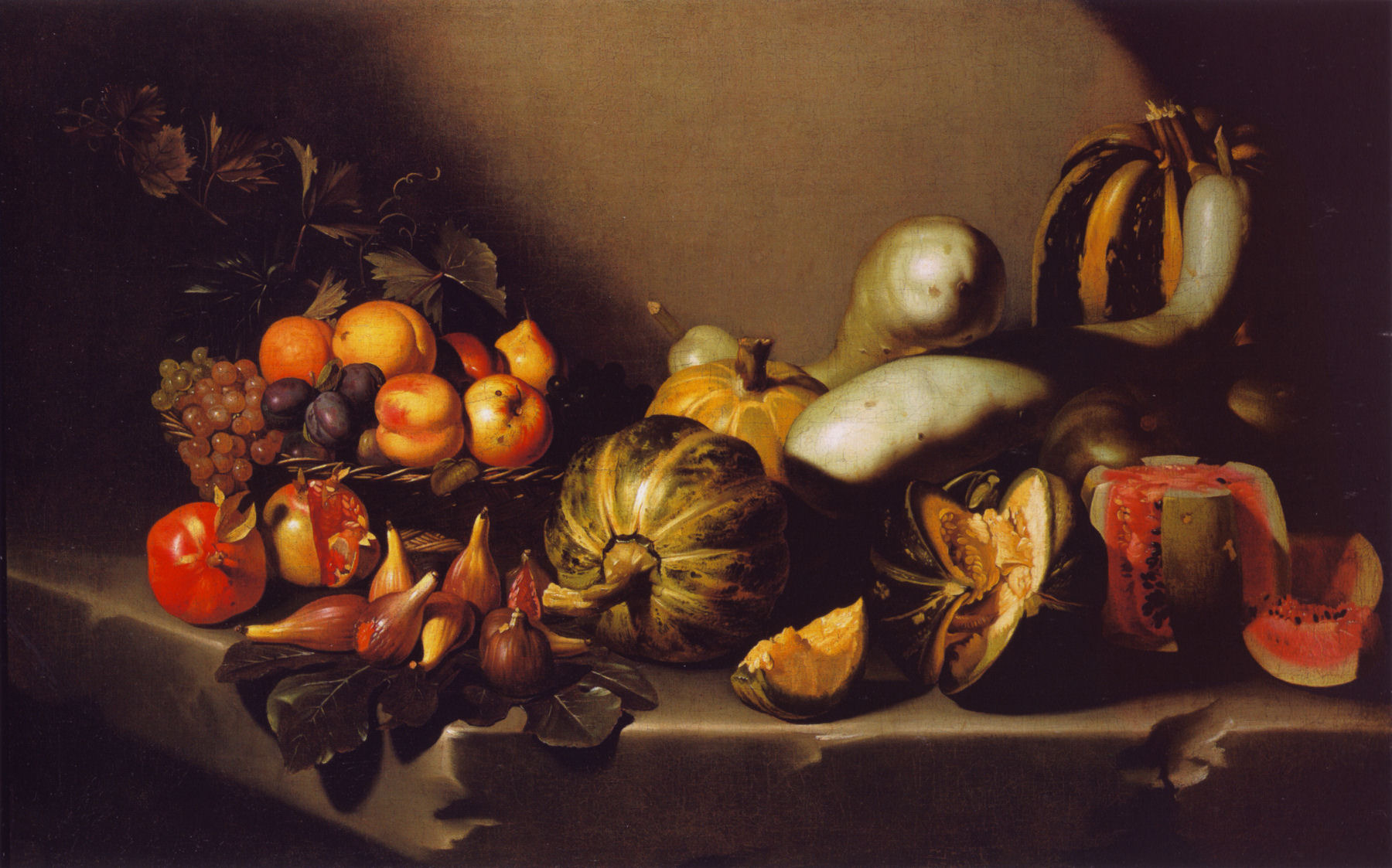Thanks for visiting Art History Abroad’s blog, we hope you enjoy it. We run brilliant Summer and Gap Year courses for students aged 16+. Follow our courses on Instagram or read our ⭐️⭐️⭐️⭐️⭐️ reviews on the GoOverseas review site, or watch our video.
As a little change of pace from usual, this month, I’m not actually going to be writing about real food, but rather having a little look at depictions of food (well, just fruit really) in the work of everybody’s favourite Baroque painter, Michelangelo Merisi da Caravaggio. Caravaggio is obviously best known for his stark usage of dark and light, his hyper-realistic representations of biblical scenes, and of course, for being a bit of a loveable rogue (he famously killed a man after an argument over a game of tennis.) However, as well as all of this, Caravaggio had a supreme talent for still life painting.
Granted many of these depictions are within larger pictures, such as The Supper at Emmaus (1601), housed at the National Gallery, and his Bacchus (c.1597) at the Uffizi in Florence, but there are instances where depictions of food take the centre stage, like the spectacularly originally named Basket of Fruit (c. 1595-96), in the Ambrosian Library, Milan.
What is perhaps most interesting in this painting, is that the fruit shown is not perfectly manicured and polished, instead it looks almost as if it is decaying. Some leaves sag wearily under their own weight, whilst others are pockmarked and filled with holes, whilst a central apple bears all the hallmarks of having a worm buried deep in its flesh. Even the grapes, so often shown as glowing orbs of purple and green, are distinctly dusty, and some even look to be rotten, turning to detritus quicker than their friends. As a painter, Caravaggio was never one to skirt around the truth, or do things by the book. He was renowned for using prostitutes and other folks of ill repute as models in his paintings, in order to portray a gritty realism onto his canvasses, and the slow decay of the fruit in Basket of Fruit is reflective of this style.
In stark contrast to the slightly tatty, ragged appearance of fruit in Basket of Fruit, the work Still Life with Fruit on a Stone Ledge (dated between 1601 and 1605, but widely disputed) is a veritable smorgasbord of earthly delights. All of the produce seems to scream at the viewer ‘EAT ME!’ with its appeal heightened by the cross-sections of marrow and watermelon portrayed. One can almost see the juice dripping invitingly from the melon. Virtually all of the imagery in the painting is of immense fertility and life – a handful of art historians have even argued that the writhing, bulbous white marrows are decidedly phallic, bringing to mind Nicholas Poussin’s famously censored painting of Priapus (1634-38). The iridescent freshness and life of the fruit is contrasted greatly by the stone ledge upon which it is placed. Not only is it decidedly cold and grey, but it also cracked and chipped, perhaps serving as a reminder that the fruits will also perish one day.
Caravaggio is rightly seen as one of the most influential and important painters of biblical imagery in the history of art, however his still life works, of which there are many more than the two previously mentioned, tend to be overlooked. This in my eyes is a great shame. So I say next time you feel the need for a Caravaggio fix, ignore The Calling of Saint Matthew (1600), and Judith beheading Holofernes (1599), and instead look at a painting of some food!





[…] https://www.arthistoryabroad.com/2013/01/food-in-the-baroque-examining-depictions-of-fruit-in-the-wo… […]